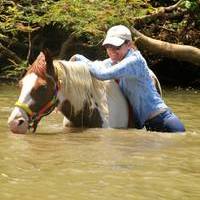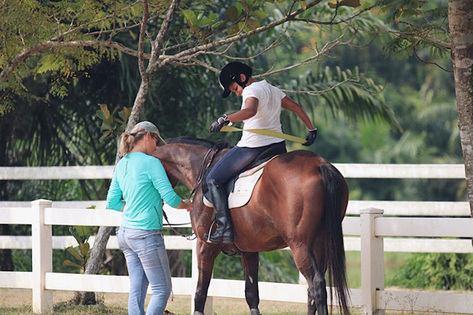
Are You & Your Horse Ready For Bitting Advice? The Steps You Need To Consider First
Equestrian Advice & Guides All Disciplines
Build your business profile for FREE and expose your services to thousands of potential clients!
Create my profile now!
So many people don’t have access to regular lessons and want to make the most of what they have worked on. So here are a couple of quick tricks to help you maximise your learning in your own time.
Write it down
After your lessons, take notes. Remember what was said, useful exercises, position comments etc.
Initially, write out a page or two, describing things in as much detail as you can. Write them, don’t type them onto your computer – writing creates clearer memories. Draw yourself pictures (yes, even my little stick man art can convey the message that I need to remind myself of…) Having this depth of information is a useful file to build.

As well as what was covered in the lesson, note the ground conditions and how your horse went, to start to see his preferences. Noticing, for example, that after a day off, having a lesson on hard ground made him uncomfortable, can help you to plan your competitions and even give the vet clues if he does go unsound.
The chances are, you aren’t going to have the time or the inclination to read these notes before every day. So, take a small piece of paper, postcard or similar and write yourself a checklist. Attach this to your horse’s bridle rack in the tack room, to your hat bag, under the sun visor in your car, anywhere that is easy to see, and every time you are heading out to ride, have a quick glance at the 4 / 5 items on your checklist. Simple phrases, such as “kneel down, supermarket trolley, wobbly lines” can mean the world to you, even if it doesn’t make sense to anyone else!
What’s on your checklist?
Use technology!
Feedback is really important in the training process, but when you ride, you won’t always have an instructor or even another rider with you, so what do you do? In this day and age, when everyone has a camera, ask someone to take photos of you while you’re riding. Study them afterwards; you could even use one of the many free apps to draw lines from ear, shoulder, hip to heel and check, if your horse vanished by magic, would you land on your feet, falling over onto your nose, or falling backwards and landing on your bum? How about the line running from your elbow, through your wrist, back of hand, reins to the bit? This line should be straight from the side and from above.
 Video your rides, lessons and competitions. Analyze them individually, but also compare two sessions 6 months apart and see how far you have come, and what issues still remain. If you are totally on your own, balance your mobile phone on a fence post, chair or in a tree and start the video. Ride the exercises you are working on, then go back, retrieve your phone and see if it looked like it felt.
Video your rides, lessons and competitions. Analyze them individually, but also compare two sessions 6 months apart and see how far you have come, and what issues still remain. If you are totally on your own, balance your mobile phone on a fence post, chair or in a tree and start the video. Ride the exercises you are working on, then go back, retrieve your phone and see if it looked like it felt.
Become your own teacher!

